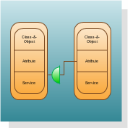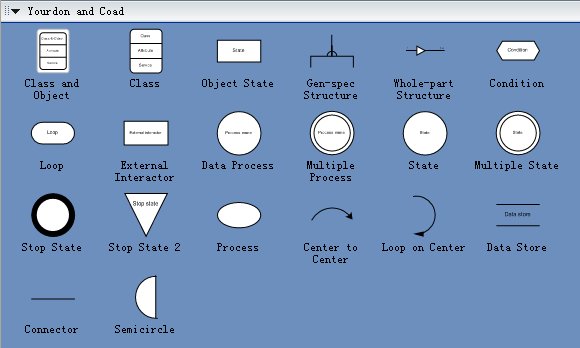Yourdon and Coad Design Software with Rich Examples and Templates
What is Yourdon and Coad
Yourdon & Coad's Object-Oriented Analysis and Design (OOA/OOD) is an object-oriented method that precedes UML. Edraw contains special shapes and settings for creating Yourdon and Coad diagrams.
In Edraw Professional, the Yourdon and Coad Diagrams templates and shapes are in the Software folder.

|
Edraw is a very easy-to-use and intuitive database design tool and Yourdon and Coad diagramming tool which can save you hundreds hours of work. Edraw is not only an excellent tool for database & ER Diagram, but also one that allows you to design flowchart, program structures, create detailed HTML or PDF reports. |
Free Download Yourdon and Coad Software and View All Examples
System Requirements
Works on Windows 7, 8, 10, XP, Vista and Citrix
Works on 32 and 64 bit Windows
Works on Mac OS X 10.2 or later
Yourdon and Coad Software Features
- Vector illustrations (8,500+ clipart and digital images)
- Over 1000 professionally designed templates
- Versatile drawing tools (can produce 200+ kinds of diagrams besides Yourdon and Coad diagrams
- Professional diagrams editing
- Free support (tons of learning materials to help you draw high quality infographics)
- Broad file format compatibility
Yourdon and Coad Symbols
This Edraw template, based on the Yourdon and Coad method, includes components for creating data-flow diagrams and also object state diagrams. Some unique attributes of their DFD notation include:
- A data store is represented as two parallel, horizontal lines.
- Processes are represented by a circle, and adorned with a double circle for multiple processes (indicating that further decomposition exists at a lower level). Note: the oval process should be reserved for object or class diagrams.

Free Download Network Diagram Software and View All Examples
Class & Object - Objects and classes are
abstractions of entities with exclusive services and attributes.
Whole-Part Relationships - Whole-part relationship refer to
objects that contain one or more other objects. There are several types of
whole-part relationships including: assembly-parts (airplane-wings),
container-contents (cabinet-files), and collection-members
(organization-members).
Generalization-Specialization (Gen-Spec) Relationships -
Generalization-Specialization relationships refer to classes that inherit
attributes and services from other classes. One class can inherit from multiple
superclasses.
Connections - Connections illustrate the dependency of one
object on the services or processing of another object.


